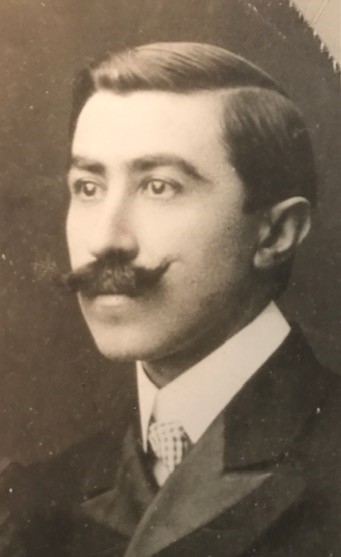
- This event has passed.

Sundermann Gallery Exhibit Opening: Ichilian: Father and Son
August 28, 2021 at 5:00 PM
| Free Artworks by Sarkis Avedis Ichilian
Artworks by Sarkis Avedis Ichilian
and Harold James Ichilian
Justus Sundermann Gallery
August 28 – September 30
Event flyer here.
St. Matthew’s parishioner Adele Ichilian provides these introductory notes for the exhibition:
My grandfather, Sarkis Avedis Ichilian, was born in Armenia on June 12, 1871. Raised in a cultured family, he traveled throughout the Near East and France. He immigrated to the US thru Canada, settling in Washington, D.C. in the early 1900s. Sarkis married in 1903 and had two children, Anna Hripsime and Harold James (my father). Naturalized in 1924, he spoke Armenian, Arabic, French and English. Sarkis died on July 21, 1940, and was buried in Lincoln Cemetery in Washington, D.C. beside his wife, Statira.
My father, Harold James Ichilian, was born on May 13, 1912, and raised in Washington, D.C. A graduate of George Washington University with a degree in Library Sciences, he was also fluent in French and German. Due to prejudice in the early 1900s against those from the Near East, his father sadly ceased teaching him Armenian, stating that he was an American child and must speak English, much to my father’s regret years later. Drafted into the Army in 1942, he was sent to Italy in January of 1944. Harold spent the duration of WWII in Grottaglia, near Taranto in the instep of the heel of Italy. At war’s end, he returned to the US in May of 1945 on the Queen Mary, one of over 9,000 troops aboard the ship. Harold married in 1943 and had one daughter. He worked for the Library of Congress, the Department of Defense, and as a civilian journalist for the US Navy until the early 1960s. Upon retirement, he spent sixteen months traveling throughout Europe. Harold died on June 3, 2001, and is buried in Greenwood Cemetery, Dallas, along with his wife, Rozelle.
Neither Sarkis nor Harold received formal art training. Sarkis liked to paint scenes from his memories of the old country, and from visits to the Maryland seashore. He worked primarily in oils, pastels and charcoal. Following in his father’s footsteps, Harold began sketching during his childhood. As an adult, his subjects were primarily landscapes and animals, employing both pastels and oils. During the war, he made pastel sketches while stationed in Italy, refining them into larger paintings years later (three of these paintings appear in the exhibit).
Interestingly, both my grandfather and father wrote poetry (examples of their poetry are included in the exhibit). My father particularly liked to write sonnets. My grandfather’s poems are in his native language, which my friend Boghos Kirazian has translated and reported that they are quite melancholy. They undoubtedly reflect his sadness of not being able to go back for visits after the tragic genocide of more than one million Armenians by the Ottoman Empire in 1915.

